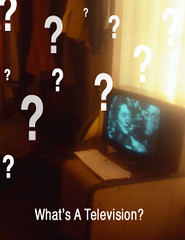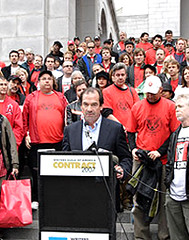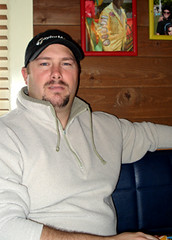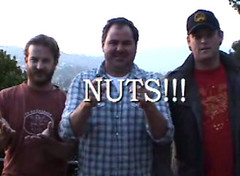
About a week ago, I posted a free spirited and wildly creative Volkswagen video that is short on sales and long on fun at Friedeggs, a fresh and campy social network that is similar to Twitter but with a more robust platform like Facebook. Everybody loved the video.
They weren't alone. More than 700,000 people have watched the video. By most measures, it's a viral success story. It's only a matter of time before it will pass the one million viewer benchmark. And somewhere around the one million mark is where most advertising industry pubs will pick up the story (if they haven't already). After that, youngling creatives will rush to copy it.
Not so fast, younglings. After mulling over the spot for more than a week, there might be a problem in bookmarking this video for a future ripoff. There seems to be something missing when compared to the Coca-Cola Happiness Machine video. Any guesses?
Why The Volkswagen Fast Lane YouTube Video Works.
Let's start with why it works. It doesn't focus exclusively on the product, which softens the sales element and increases sharing in social media circles. It celebrates the relationship between people and emotional concepts like youth, freedom, and fun.
The presentation of spontaneous and unexpected stimuli almost always works. We all like to watch how people react to such scenarios, sometimes wishing we were there to take a turn.
Why The Volkswagen Fast Lane YouTube Video Doesn't Work.
There is no question that I love the piece, but there is a problem too. It doesn't make anyone want to buy a Volkswagen. It makes them want to buy a slide. That's a problem.
So what went wrong? If you do follow the link to the Coca-Cola spot and watch that spot again, it becomes more obvious. The Coca-Cola commercial focuses on the relationship between the product and the customers. The slide spot, however, focuses on the relationship between a slide and random people.
Sure, it's a metaphor of sorts. But with the exception of slide transportation, this spot could be transposed on any product or service, ranging from a production company demonstrating creative interaction to a speedy microprocessor tucked inside a computer. The brand is so disconnected that when people share this video, many call it a "slide video" as opposed to a "Volkswagen video."
Of course, if we want to be picky, there is the additional problem that the concept is nothing but a fast lane cliche, which is a clear violation of advertising rule number 8.
Right. There is nothing more boring than tagging any car company with a fast lane cliche, despite how well executed as this video might be. The only saving grace is that they really don't attach the cliche to a car or van. It's attached to a slide, which works.
Why Advertising Is Hard Work.
The push back on advertising is never related to the fact that people hate advertising. If they truly hated advertising, Super Bowl spots wouldn't be covered by prime time news. What people hate is bad advertising (which means most of it).
Great advertising requires a careful balance between entertainment and motivation. Advertisers want people to do something, usually related to buying the product or finding out more. This spot didn't seem to make most people want to buy a Volkswagen or join Facebook. It does make some of us want a slide installed next to every escalator on the planet. And that's a problem no matter how many times we watch it.
































